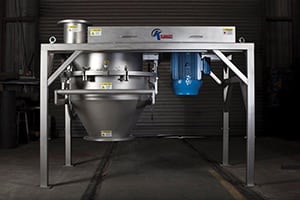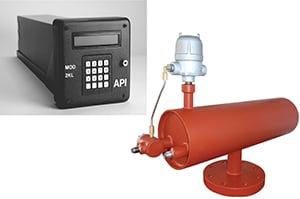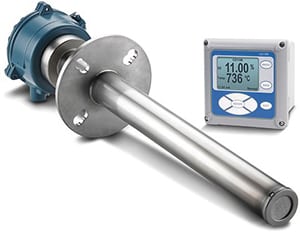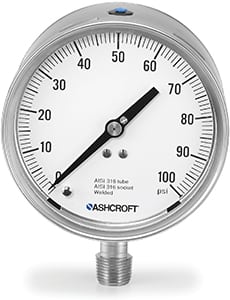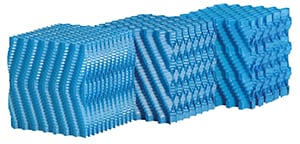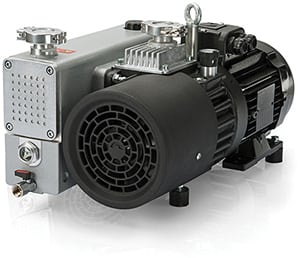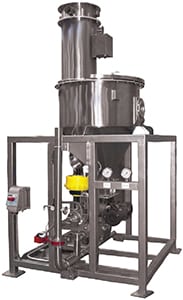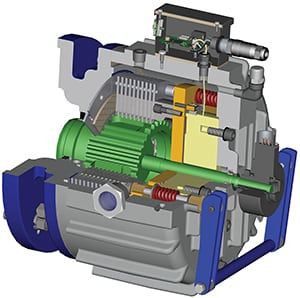New Products & Services
May 2018
The CGM 750 (photo) is a new cone mill with a diameter of 29.5 in. (750 mm) that gently grinds fatty, heat-sensitive, sticky, moist or fragile materials into uniform particle sizes with minimal fines at rates up to 32 metric tons/h. Vertical material flow and low-energy grinding action with short residence times yield close particle-size distributions from 125 to 250 μm, without the noise, dust, product buildup or heat generation associated with traditional mills, according to the manufacturer. The sanitary unit is suitable for wet and dry milling, pre-conditioning and de-agglomerating of a wide range of bulk products. A pneumatic, swing-down conical discharge chute with quick-release clamps allows easy lowering of the cone housing and full access to the housing interior, beater and perforated conical screen for cleaning and sanitizing. Provision is included for optional air purging of bearings and seals. — Kason Corp., Millburn, N.J.
The CL 10HY-V2 density cell and Series 2000 density digital converter (photo, p. 37) can be used to measure the density of ammonium hydroxide, caustic soda, ethylene glycol, methanol, nitric acid, oleum, phosphoric acid, sodium chloride and sodium hydroxide. The CL10HY-V2 cell is double-sealed for protection against leaks and provides density measurement for high-pressure service up to 1,480 psig. It is available in a variety of corrosion-resistant metals and is explosion-proof. The Series 2000 converter has an onboard microcontroller and requires no programming from the user. The software provided with the converter calculates the gravity using the density and temperature information generated by the CL10HY-V2. A two-line LCD screen displays the temperature, density, product frequency and status. — Dynatrol, a division of Automation Products, Inc., Houston
The Rosemount CX1100 in-situ oxygen analyzer (photo) is said to be the first high-performance, zirconia-cell-based combustion-control system designed to improve energy efficiency and meet environmental regulatory requirements for small and midsize boilers. It features the same sensor reliability found in large industrial technology, but the system is built to the requirements of boilers used in smaller applications. The zirconia sensing cell and the all-welded probe provide a long sensor life. The combustion-control system requires no reference gas, which keeps installation and maintenance costs low. — Emerson, St. Louis, Mo.
The new 1209 pressure gage (photo) is equipped with a 316L stainless-steel solid front case and ring, along with a pressure-relief back cover to ensure that the process fluid will be directed away from the operator in the event of an internal failure. Optional liquid fill or the patented Plus Performance option dampens shock, vibration and pulsation. With a 4.5-in. dial size and accuracy to±0.50% of span, the 1209 pressure gage meets the requirements of ASME B40.100, Grade 2A standards for accuracy. The device can handle pressures up to 20,000 psi. — Ashcroft Inc., Stratford, Conn.
This company’s Sanipacking fills (photo) prevent the growth of bacteria and reduce the risk of Legionella bacteria in wet cooling towers with open circuits. Sanipacking fills also prevent colonization of the fill surface by the microbe Pseudomonas aeruginosa, the species most frequently found in the biofilm of industrial cooling water. To maintain the full antimicrobial effect for three to five years, it is necessary to keep the surfaces of the fills free of inorganic encrustation with effective water treatment and regular maintenance. The impact-resistant and pressure-stable Sanipacking fills consist of special individual polypropylene films that are systematically sealed together to form stable modules with a cross-fluted structure. In addition, high-efficiency NET150 splash fill packs are available with Sanipacking materials. The honeycomb-shaped modules can operate with effective resistance under water temperatures of up to 80°C. The material does not contain arsenic or heavy metals, and is resistant to fouling, fungal effects, corrosion and UV radiation. — Enexio Management GmbH, Herne, Germany
The new two-stage Sogevac NEO D rotary vane pump (photo) is equipped with a high-quality exhaust filter inside the oil casing. Built-in filtration reduces the required integration volume of the pump and ensures a cleaner environment without oil smoke or loss while pumping down. The acoustic properties also set new standards — the pump is said to be 3 dBA quieter than conventional models on the market. Sogevac NEO D is designed for maximum uptime through its new shaft-sealing technology and the use of durable mineral oils. This results in maintenance-free operating intervals of up to three years. — Leybold GmbH, Cologne, Germany
The new Allen-Bradley Micro 870 programmable logic controller (PLC; photo) can support applications that require up to 304 I/O points, 280 kB of memory and 20,000 program instructions. The Micro870 PLC uses a flexible design concept that provides designers up to three plug-ins and eight expansion I/O modules. This capability allows them to easily customize or expand the controller to meet each machine type’s unique requirements. The controller’s memory capacity supports modular programming and the use of user-defined function blocks to help reduce design time. Additionally, machine builders can use the memory capacity to maintain a single program for all machine models that use the Micro870 PLC. The controller communicates via EtherNet/IP and has multiple embedded communications options, including a USB programming port, a non-isolated serial port and an Ethernet port. — Rockwell Automation, Milwaukee, Wis.
The E-finity (photo) is a continuous, dense-phase conveying system for fragile materials. Precise pressure monitoring and airflow corrections allow the system to operate efficiently under a wide range of conditions, while gently inducing materials through the conveying line in slug form. E-finity is well-suited for granular and pelleted materials. The system’s air controls can employ a single air source to operate two or three different systems simultaneously. The result is cost savings in both equipment and installation, says the company. — Schenck Process LLC, Kansas City, Mo.
The MagnaShear motor brake (photo) employs oil shear technology that transmits torque between lubricated surfaces, thereby preventing wear on friction surfaces. A patented fluid-recirculation system dissipates heat, eliminating heat buildup, which is the most common problem in dry braking systems. Elimination of the wear increases service life and also elongates maintenance intervals. MagnaShear motor brakes are ideal for applications where the motor is reversed each cycle. Totally enclosed, MagnaShear brakes are impervious to moisture, dirt and dust, and can be sized to the correct torque independent of the motor frame size or horsepower. They have “quick mount” features for simplified mounting to drive motors in NEMA frame sizes 56 to 449. — Force Control Industries, Inc., Fairfield, Ohio
